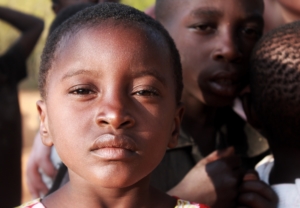5 Facts About Children in the Democratic Republic of the Congo

The Democratic Republic of the Congo is a country located in Central Africa and home to 84.07 million people. About 72% of the population live on less than $2 a day, making the DRC one of the world’s poorest countries. Because many live in extreme poverty, the community is vulnerable to diseases and suffers greatly, especially children. Here are five facts to know about children living in the DRC.
5 Facts About Children in the Democratic Republic of the Congo
- Disease: Though life for children in the DRC has dramatically improved over the years, there is still much more work to be done. The child mortality rate for children under the age of five is 88.1 deaths per 1,000 live births. Diseases are the most persistent threat to children, with thousands dying from numerous ongoing epidemics a year. Primary illnesses children in the DRC face include measles, cholera and malaria. Measles, being the most severe disease, killed over 6,000 children in 2019. Around 85% of these deaths were children under the age of 5. Now, COVID-19 poses a significant challenge for the DRC as it is one of the most at-risk countries in Africa. Additionally, the global pandemic has hampered vaccine deliveries to the DRC, causing children’s lives to be more at stake than ever.
- Malnutrition: More than six million children under the age of 5 suffer from chronic malnutrition. Without proper nutrition, around 46% of children in the DRC are stunted in growth and development. Moreover, the pandemic will likely lead to a rise in food costs worldwide, causing impoverished countries like the DRC, which already suffers from a lack of resources and economic stability, to become food insecure. If food becomes more expensive, the already high malnutrition rates will also reach a tragic tipping point.
- Education: Education is the key to a better future away from poverty. It is also a critical factor in improving health practices, essential services and the DRC’s overall socio-economic status. Unfortunately, almost seven million children from ages 5 to 17 do not go to school or have any proper education. Because of political instability caused by wars and natural disasters, the DRC is currently unable to have universal primary education. Money is also a significant obstacle to receiving education since much of a child’s education costs falls on the parents. Those who can attend school also find high dropout rates, as there is a low quality of teaching. Factors such as child labor, marriage and health conditions also contribute to children’s lack of access to education.
- Homelessness: Homelessness is also a big issue for children in the DRC. Almost 30,000 children under the age of 18 suffered from homelessness in 2011. There are many reasons for homelessness, such as war-conflict, diseases, unemployment and internal displacement. Often, mothers who have children from sexual abuse abandon their children due to trauma. With no proper child protection institutions in the DRC, children have no choice but to live on the street. Due to the lack of a support system, many children are forced into illegal acts to obtain access to food, shelter and other basic amenities.
- Violence: The DRC has one of the highest ratings in terms of violence against children, especially sexual violence. In 2018, over 250 girls were sexually abused during inter-communal disputes. One in two women between the ages of 25 and 49 are affected by forced child marriages, often resulting in teenage pregnancies. About 27% of girls between the ages of 15 to 19 are pregnant, securing the DRC a spot in the top 10 countries with the highest levels of teen pregnancies. In 2017, over 800,000 children in the DRC were forced to leave because of the vicious internal conflict, which in result forced them to live in brutal weather conditions and safety hazards. Child soldiers are also not uncommon in the DRC. In 2018, over 600 cases of child recruitments were documented by the Office of the Special Representative of the Secretary-General for Children of Armed Conflict.
Despite all that DRC children suffer from, conditions have been improving drastically over the last few years. With help from donors and organizations, there is high hope that the safety, health and standard of living will only continue to improve for children in the Democratic Republic of the Congo.
– Katelyn Mendez
Photo: Pixabay
